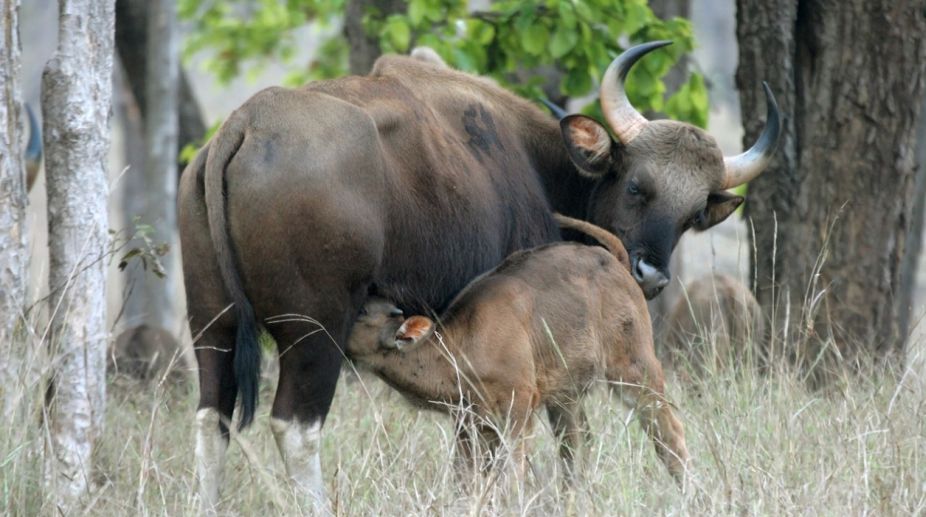Gaur: Darker and smaller
Kahna offers exceptional amenities to a herbivore that is mainly a grazer like the gaur, for the rolling maidans offer it excellent pastures.

(Photo: Getty Images)
For several years now I have been studying gaur in various Southern areas where they probably attain their best development in India-the Nilgiris and Wynaad forests and the Sungam and Periyar areas of Kerala. I have been specially lucky in that for the past five years (with a break last year) I was able to watch large composite herds in the Theppakadu forest of the Mudumalai sanctuary in September-October, and elsewhere in that sanctuary again in March-April I have been able to secure conclusive photographic evidence of the same herd bulls running with individual herds in summer and staying together in a large composite herd in September-October.
In short, my observation records go to show that the social life of gaur herds is much less rigid than what other naturalists have pronounced it to be, and that on occasions, as when breaking new ground, several fully adult herd bulls may stay more or less peacefully in one large composite herd, even though several cows in the herd might be simultaneously in season.
I hope to publish a monograph of the social and sexual life of gaur shortly, after devoting two more seasons to complete observations, but I may briefly record here what I have noticed about newborn calves.
Advertisement
All authorities agree that there is no regular breeding season in gaur (with a rut confined to one or two months of the year) and that gaur are born during many months of the year. However, speaking of South India, it is true to say that the greatest number of calves are born in April.
Presuming a period of gestation of 10 months, this would suggest marked breeding activity about June, and it is true that in June composite herds are not to be seen and that several cows in the individual herds do come into season.
In gaur, the birth of an infant does not limit the movement of the entire herd for two or three days as it does in elephants. I once had the good fortune to actually watch the birth of a gaur calf (from a considerable distance and through binoculars). The young mother, who seemed to be in some discomfort, walked away from the herd into tall grass and finally lay down in a thick patch of grass. After about three hours, she emerged from that patch followed on wobbly feet by the newborn calf.
The herd had moved on about three miles by then and it took that gaur cow till evening to rejoin the herd. In April one notices, in addition to the golden brown newborn calves, older calves of about six months of age. In my photograph taken at the Periyar sanctuary, three newborn calves and two older calves can be seen clearly.
The horn-buds are clearly visible in the newborn infants which may vary in colour from a rich beautiful golden sienna to a shade approaching beige. The darker calves, so far as I know, usually belong to comparatively small-sized cows which have much black hair on the throat and forequarters.
The golden brown calves on the other hand belong to larger-sized cows which are brown in colour, varying from a rich burnt umber, to raw umber with golden glints in the highlight. I believe I am correct in saying that this point has not been recorded before.
New born calves are very wobbly on their feet for the first few hours and are literally licked into shape by their mothers. The strong steady application of the maternal tongue obviously serves to stimulate blood circulation as well as to soothe the infant and encourage it to suckle.
During the first few days of their lives gaur calves are, I think, singularly prone to attacks by leopards and possibly also lesser carnivores. After the third day, they are well able to run with the herd and are assured of the massive protection of the adult members of the herd.
(This was published on 9 May 1966)
Advertisement